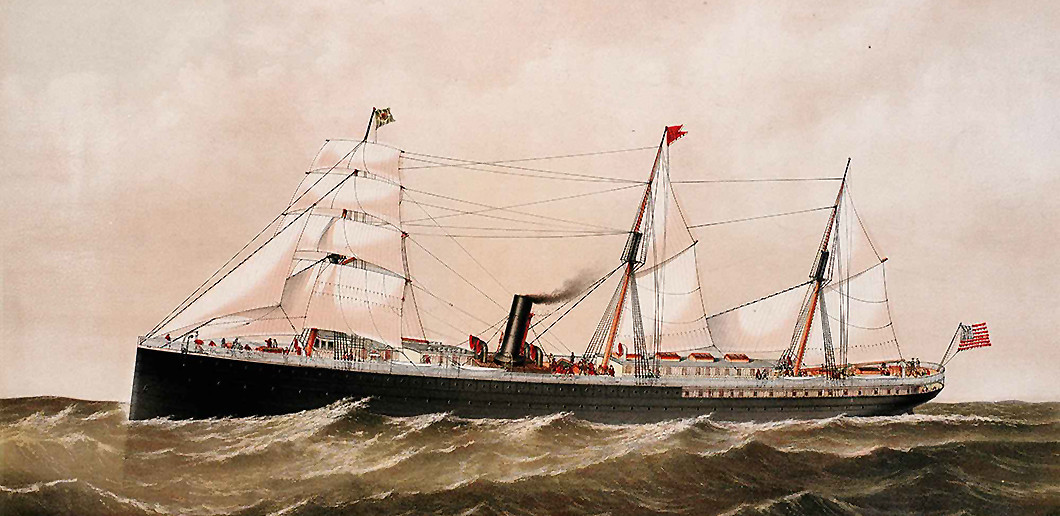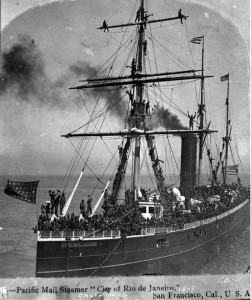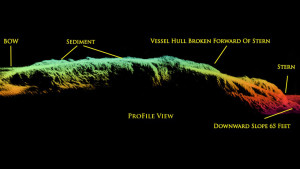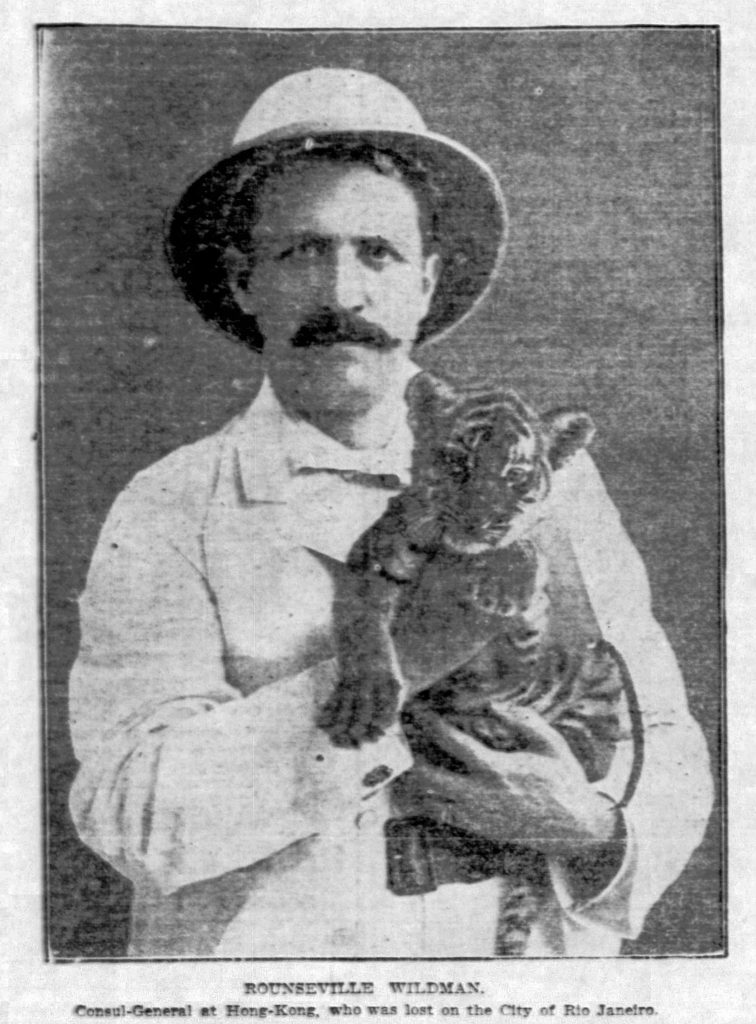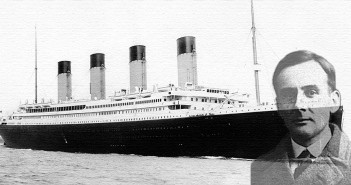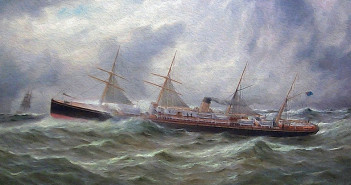All ocean liner disasters are appalling, yet several unique attributes make the City of Rio de Janeiro tragedy particularly disturbing.
The Titanic of the Golden Gate
On 22 February 1901 the Pacific Mail steamer City of Rio de Janeiro (1878), inbound from Hong Kong, was nearing the end of her journey, feeling her way toward San Francisco in a dense morning coastal fog.
Just before 5 a.m., the liner neared the Golden Gate, the entrance to San Francisco harbor. Unfortunately, the ship was south of her course, which resulted in her running into a line of sharp rocks near Land’s End and Fort Point. Nearly the entire underside of the vessel was ripped open. Lacking watertight bulkheads, the liner flooded quickly and sank in less than 10 minutes.
In those few minutes, 200 passengers rushed up on deck and began fighting for lifeboat seats. The ship was packed with mostly Chinese and Japanese emigrants. The U.S. Consul-General in Hong Kong, who was returning to the United States on leave with his wife and two children, was also on board. The liner’s precious few lifeboats were quickly overcrowded and most foundered. Vicious fistfights broke out over scarce life jackets.
Panic and Delay
The wreck happened so quickly, and in such dense fog, that the lookout at the Fort Point Lifesaving Station, located only a few hundred yards away from the unfolding disaster was caught completely unaware. Only when a solitary lifeboat was seen emerging from the mist were rescue boats finally launched. A few survivors were eventually found, most clinging to the ship’s wreckage. The consul-general’s entire family died in the tragedy.
Just weeks earlier, one of the vessel’s Chinese crewmen allegedly broke into a passenger cabin and accosted two female passengers. Chained below deck, the prisoner supposedly loudly vowed that everyone aboard the liner would soon rot on the sea’s bottom.
The disaster’s grim final total: 135 passengers and crew dead, including Capt. William Ward. His body washed up on the beach near Fort Point in July 1902. Ward’s remains were identified by the watch chain wrapped around his rib cage.
For years, maritime historians and other had only a general idea of the shipwreck’s location. In 2014, the US National Oceanic Atmospheric Administration’s Maritime Heritage Program finally documented the City of Rio de Janeiro shipwreck in 287 feet of dark, muddy water. The study was part of a two-year program to catalogue shipwrecks in the Golden Gate National Recreation Area and the Gulf of the Farallones National Marine Sanctuary.
Please help keep Ocean Liners Magazine afloat. Any amount will be greatly appreciated. Think of it like tipping your history steward.
—Regards, John Edwards, Editor/Publisher.

